From Lancets and Super Pantsirs to Small Missile Subs and Drone Docks: What’s New at ARMY-2024?
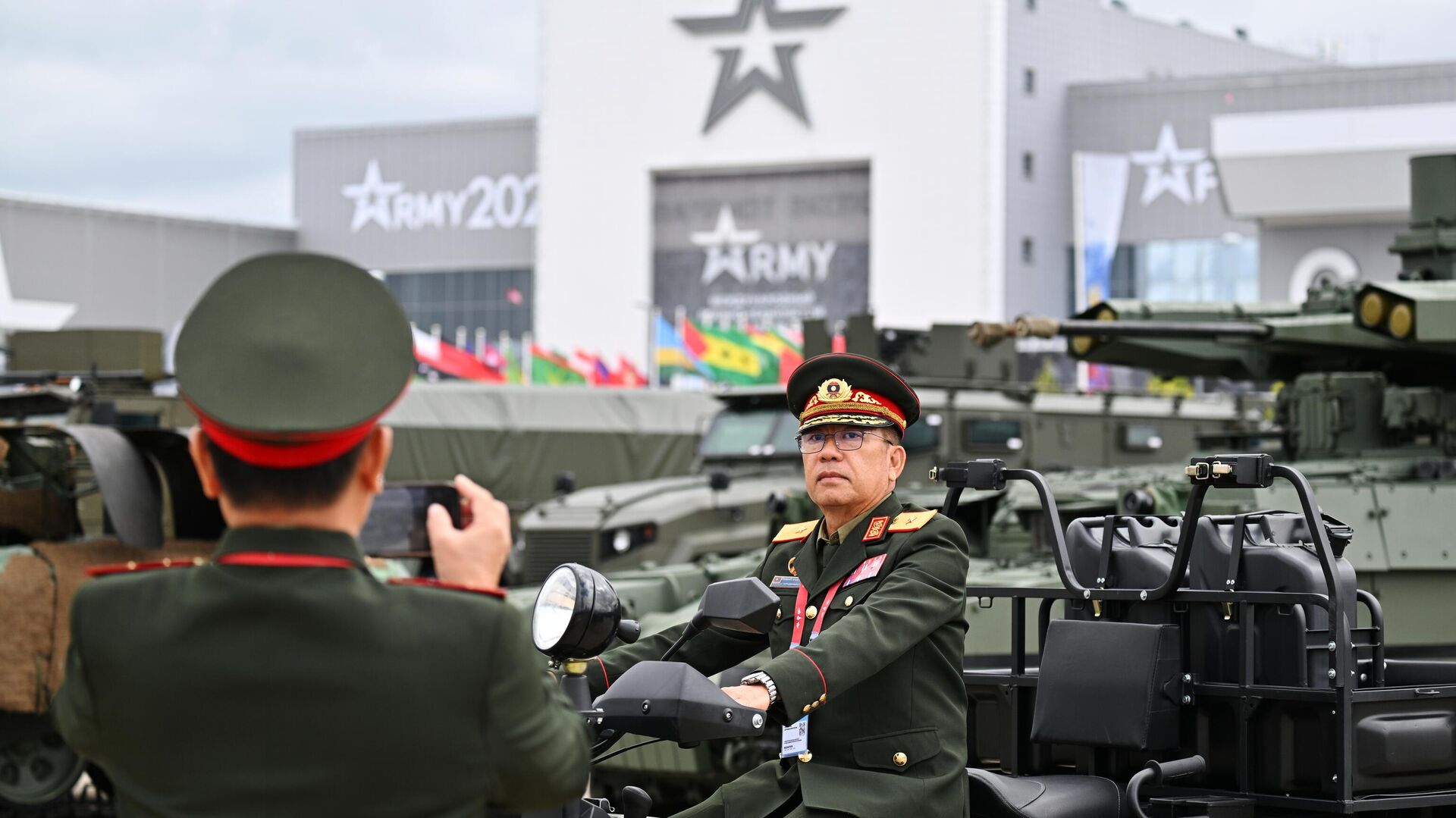
© Sputnik / Pelagiia Tikhonova
/ Subscribe
ARMY-2024, Russia’s largest annual defense forum and expo, kicked off in Moscow region on Monday, with delegations from dozens of countries arriving for the three-day event to familiarize themselves with weapons and equipment made by Russian defense enterprises. As always, among them are brand new designs and major upgrades to existing systems.
This year's ARMY forum is being attended by high-level military delegations from 83 countries, with over 20,000 pieces of weaponry, equipment and military-grade products developed by over 1,000 domestic and foreign defense companies on display.
ARMY-2024's crop of never-before-seen or heavily upgraded Russian military equipment focuses heavily on drones and drone defenses, electronic warfare, artillery, new armored vehicles, and tweaked air defense equipmen.
In his address at the expo's opening ceremony, Russian Defense Minister Andrei Belousov listed the availability of modern weapons, and specifically, high-precision weapons, as one of the keys to success in a modern conflict. Russia's arms makers seem to be on the same page in this regard.
New Drones in the Air, on the Ground and at Sea
Lancet-E: a new export variant of Russia’s distinctive x-winged loitering munition featuring the base Z-16-E reconnaissance drone and Izdeliye 51/52-E guided munitions. Russia expects strong demand for the Lancet-E, and state arms export intermediary agency Rosoboronexport says it's ready to discuss licensed and joint production.
Rosoboronexport General Director Alexander Mikheev said in a press release that the Lancet has demonstrated its effectiveness on the battlefield against a broad array of threats, from armored vehicles and fortifications to targets at sea.
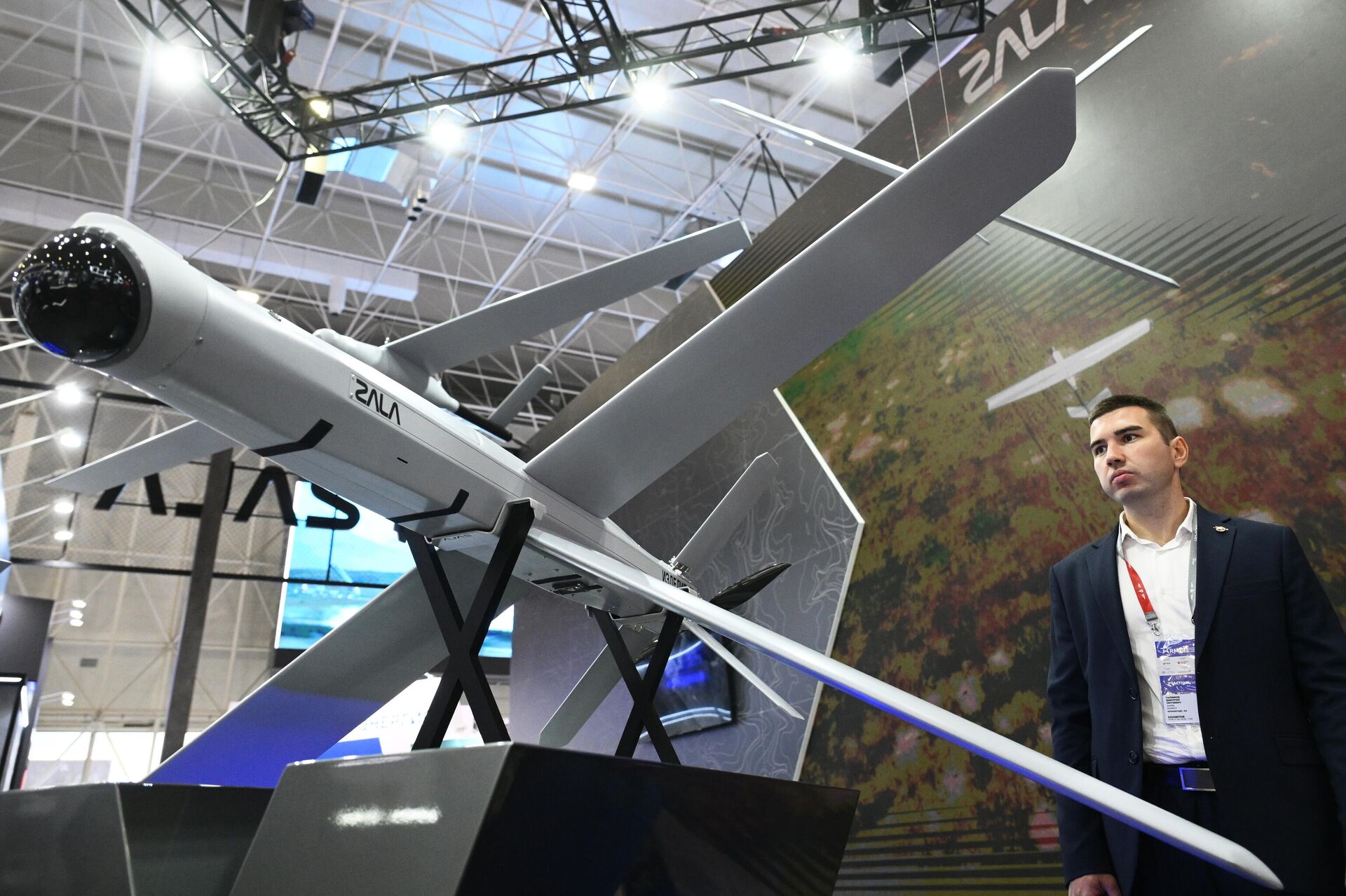
Zala Lancet drone on display at the ARMY-2024 defense expo in forum in Moscow region.
© Sputnik / Vladimir Astapkovich
/ Depecha and Buggy: Dubbed by developers as the "world’s first ground-based FPV kamikaze drones", these small tracked (Depecha) and wheeled (Buggy) vehicles are designed to quietly zip over into enemy lines to target personnel, pillboxes, bunkers, fortified firing positions and strongholds with between 150-250 kg of munitions. They can also carry provisions, ammo and fuel to friendly forces, and evacuate wounded troops. Both are operated using joystick and FPV helmet.

Excerpt from Sputnik Uzbekistan infographic featuring artist's rendering of the Depecha (left) and Buggy (right) fpv kamikaze and resupply drones.
© Sputnik / Sputnik Uzbekistan
Mangust: A new tracked unmanned drone platform developed by Almaz-Antey. These small 15-25 kg vehicles were developed to inspect hard to reach areas and deliver 80-90 kg of cargo.
Argus-D: A major upgrade to the Rubin Design Bureau’s Argus platform of deep-water drone vehicles. Designed to deliver of an array of droppable payloads to the sea and ocean floor, and packed with sophisticated onboard computer with obstacle avoidance system, sonar, and Doppler log. Immersion depth up to 3 km.
The Argus-D’s equipment is said to include technologies which enabled the Vityaz-D deep-sea vehicle to carry out the world’s first fully autonomous mission in the Mariana Trench in 2020. The drone can be carried by surface ships in a standard 40-foot container, and has an open architecture design to reduce costs and improve compatibility with an array of support equipment.
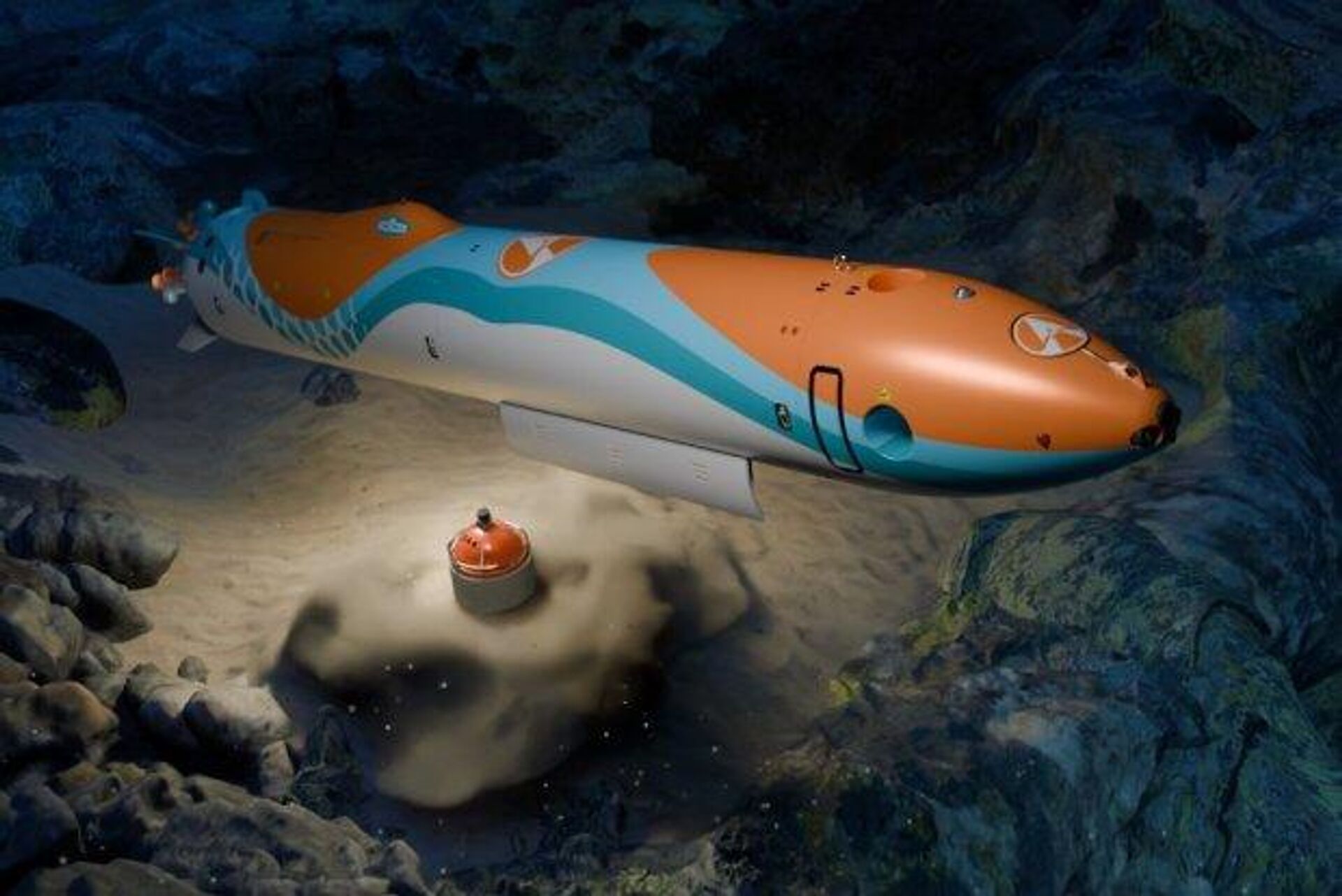
Artist's rendering of Argus-D underwater drone.
© Photo : Rubin Design Bureau
Octavis: A unique new autonomous underwater docking station developed to charge and communicate with underwater sea drones and transmit data to coastal centers. Designed to be anchored or grounded at depths of 500-1,000 m, and to service between one and three drones. The prospective platform is expected to dramatically reduce risks associated with submerging and retreiving drones from the water, and cut costs associated with the need for support vessels.
In turn, the coverage area of underwater drone awareness is expected to increase, not just for military purposes – but civilian tasks such as the collection of scientific data related to oceanology and climate science, or the extraction of mineral resources offshore.
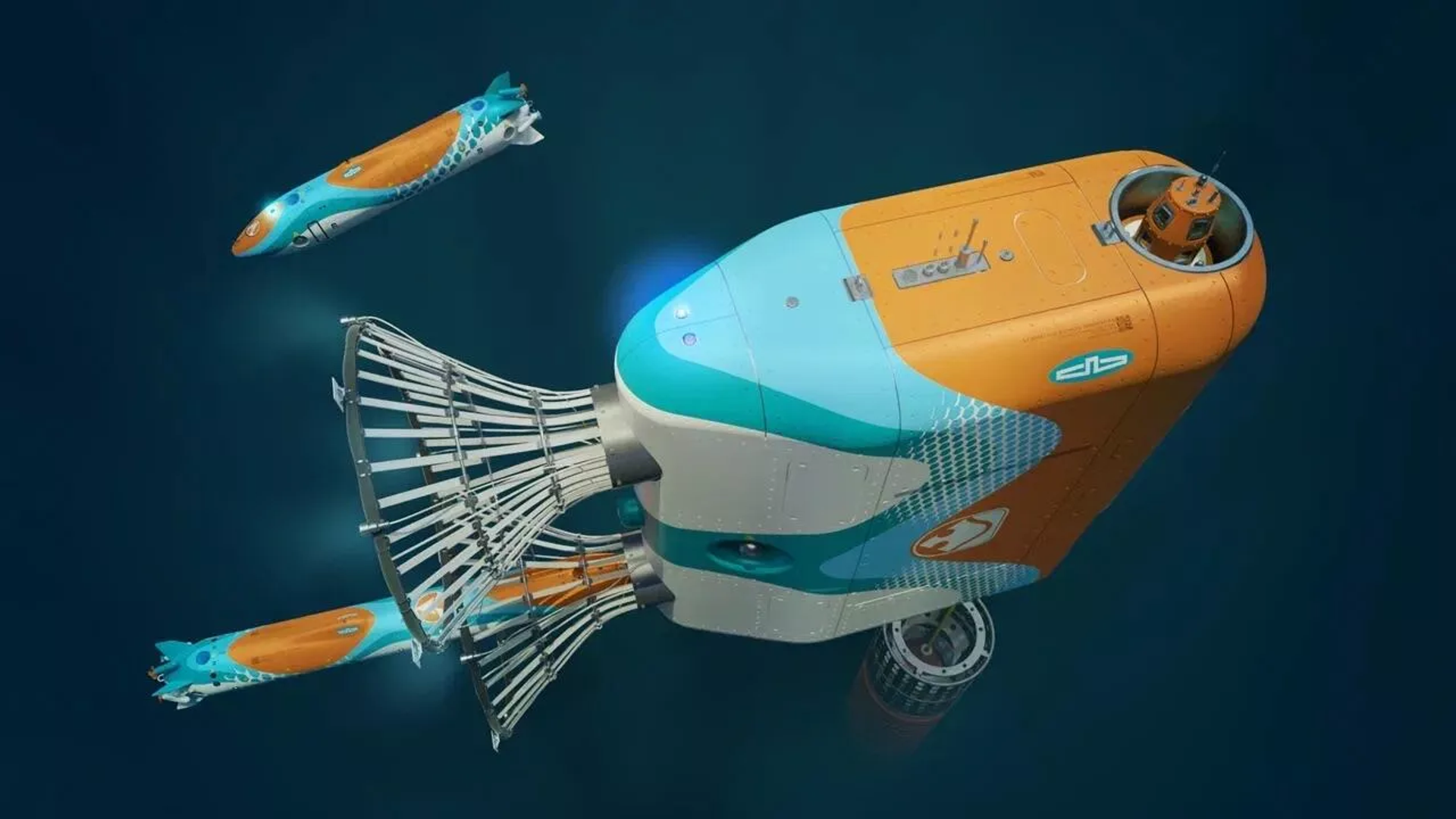
Concept art of the Octavis underwater drone docking station.
© Photo : Rubin Design Bureau
New and Improved Armor, Artillery and Vehicles
BTR-22: Prospective APC (armoured personnel carrier) accounting for experiences gained in the Ukraine conflict and featuring cope cage anti-drone protection features and a LGSh-689 electronic warfare system, new armor strong enough to withstand small arms fire to calibers of up to 12.7 mm armor-piercing shells, mine fragments and artillery shrapnel (including mine protection under the vehicle's belly). The vehicle has a combat crew of 11 and room in its crew compartment for 8 troops.
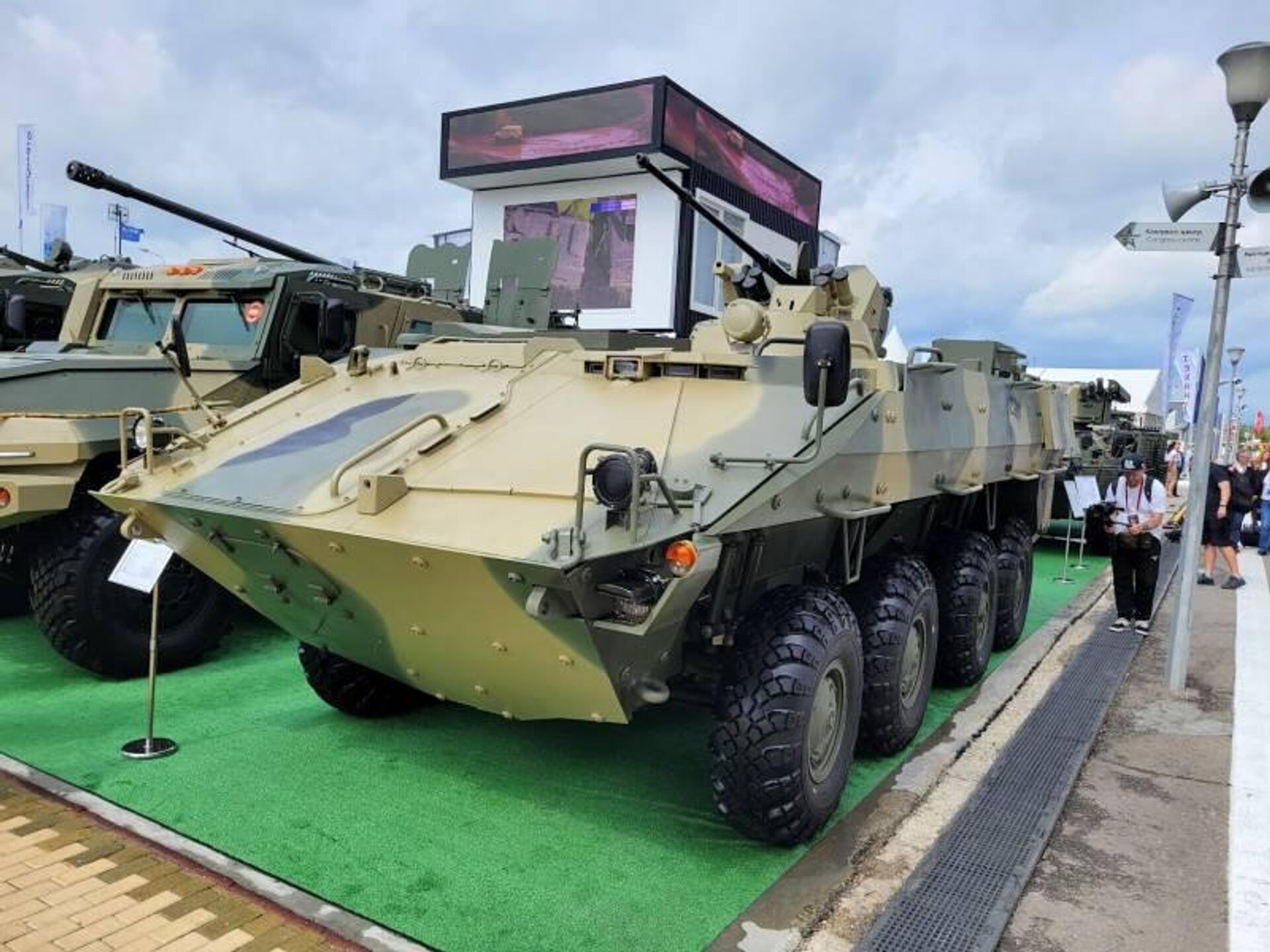
BTR-22 at an arms expo. File photo.
© Photo : bmpd.livejournal.com
Plastun: A new series of low-cost, simple to operate and repair tracked and wheeled vehicles designed to provide the army with a class of peppy, lightweight, maneuverable, all-terrain troop, cargo and supply carriers.
The Plastun-2 is tracked and has a weight of up to 6 tons full-load, and is designed with superior maneuverability and passability in mind over snow and mud, while the Plastun-TT is a bare bones 2.8 tons full load wheeled jeep with 4x4 offroad ready capabilities and a frame which can fold 30 degrees to reduce the turning radius.
Both vehicles borrow components from widely available Russian civilian vehicle designs, including the Niva and the Gazelle. Negotiations are underway on the supply of these vehicles to the Russian military, according to developers.
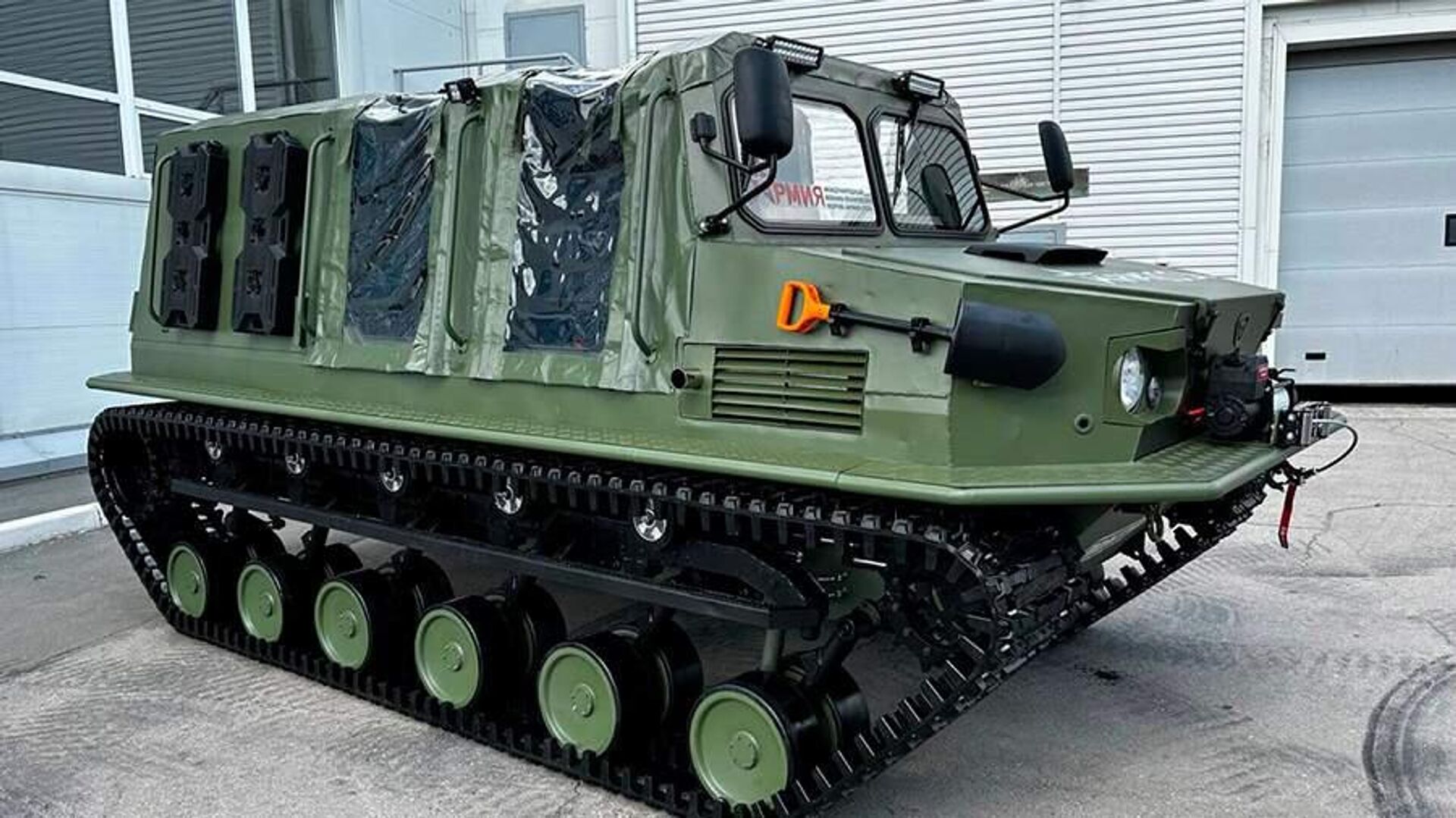
Tracked Plastun-2 tracked vehicle.
© Photo : Russian All-Terrain Vehicles Plastun company
Malva: On display at ARMY-2024 is a series-production ready version of the Malva self-propelled howitzer, which has seen combat testing in the special military operation zone in recent months to confirm its operational effectiveness. Built on an 8x8 BAZ truck chassis, these howitzers are equipped with a 152 mm 2A64 gun with a 24.5 km firing range, and ability to fire seven rounds per minute.
The Malva can fit in strategic airlifters like the Il-76 for speedy redeployment across vast distances, and designed for superior shoot-and-scoot deployment (i.e. speedily deploying, firing and evacuating to avoid enemy counterfire). The Malva features a sophisticated targeting and calculations computer with a "simultaneous fire" mode in which projectiles from multiple batteries are fired at different trajectories and speeds but hit a target simultaneously.
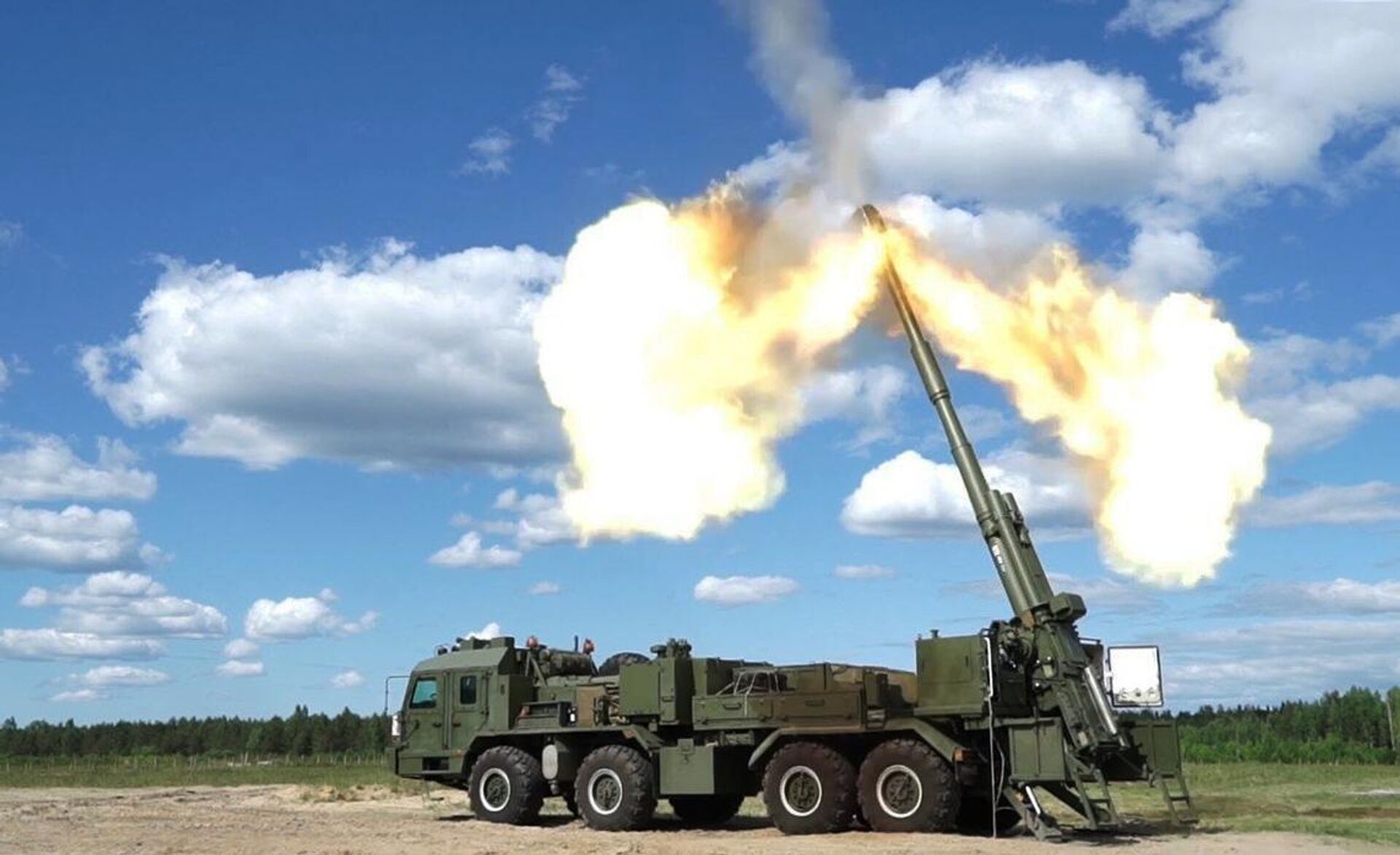
Russian self-propelled artillery system 2S43 'Malva'.
© Sputnik / Пресс-служба Минобороны РФ
/ Planshet-A: Upgraded variant of a Russian artillery fire control system with improved characteristics to save on ammo, featuring faster computer, improved data transmission range, optimized software and ability to simultaneously control entire artillery batteries.
Air and Drone Defenses
Super Pantsir: New variant of Russia’s famous air and missile defense system armed only with surface-to-air missiles.
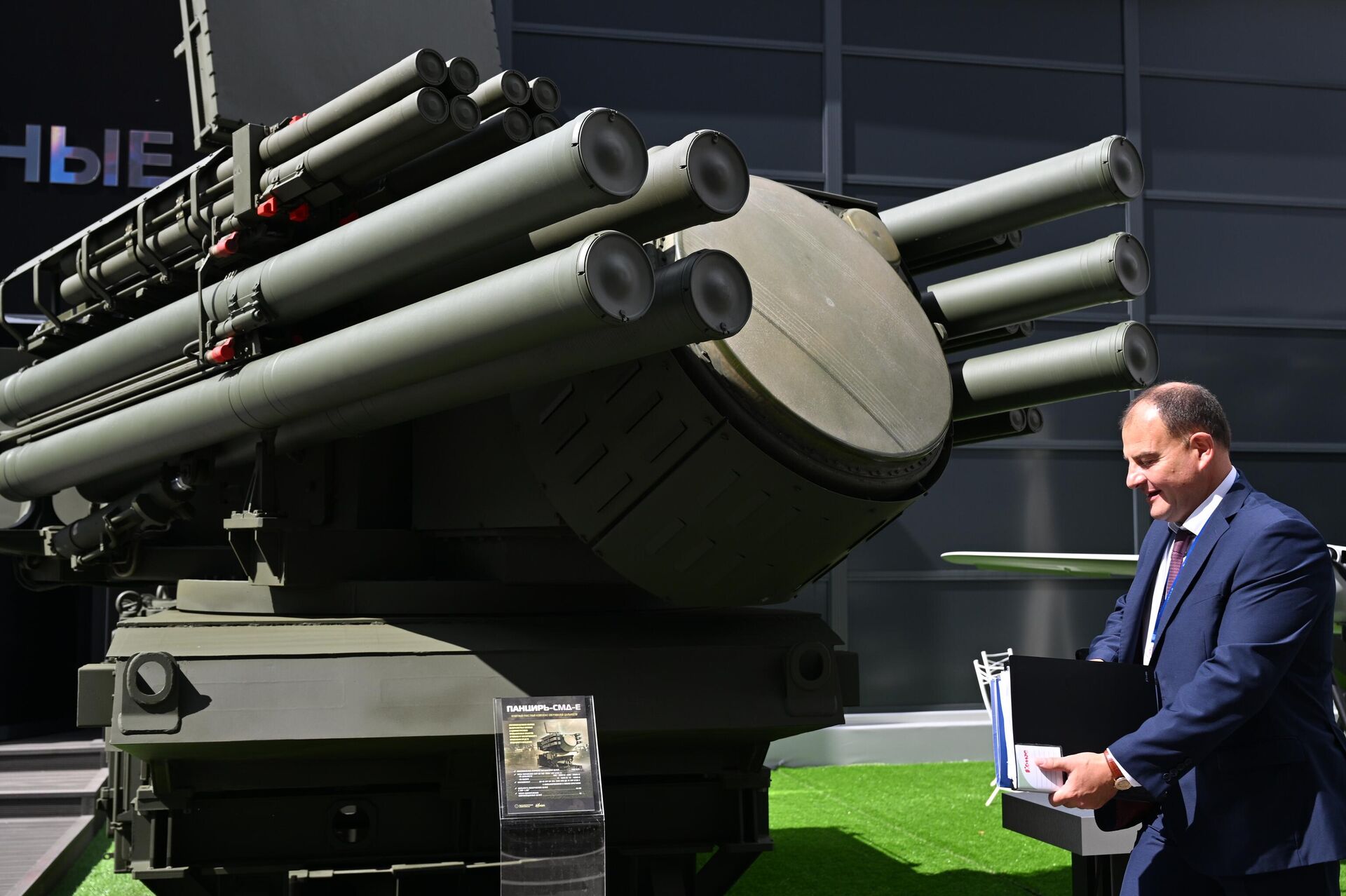
All SAM Pantsir SMD-E on display at the ARMY-2024 defense expo and forum in Moscow region.
© Sputnik / Pelagiia Tikhonova
/ Lesochek: An upgrade to the modular Russian electronic warfare system originally created to defeat radio-controlled explosive devices, but now featuring capabilities for drone defense.
Product X: A timely new lightweight, portable mini-radar system developed by Rostec, name not yet known, designed to detect enemy drone boats.
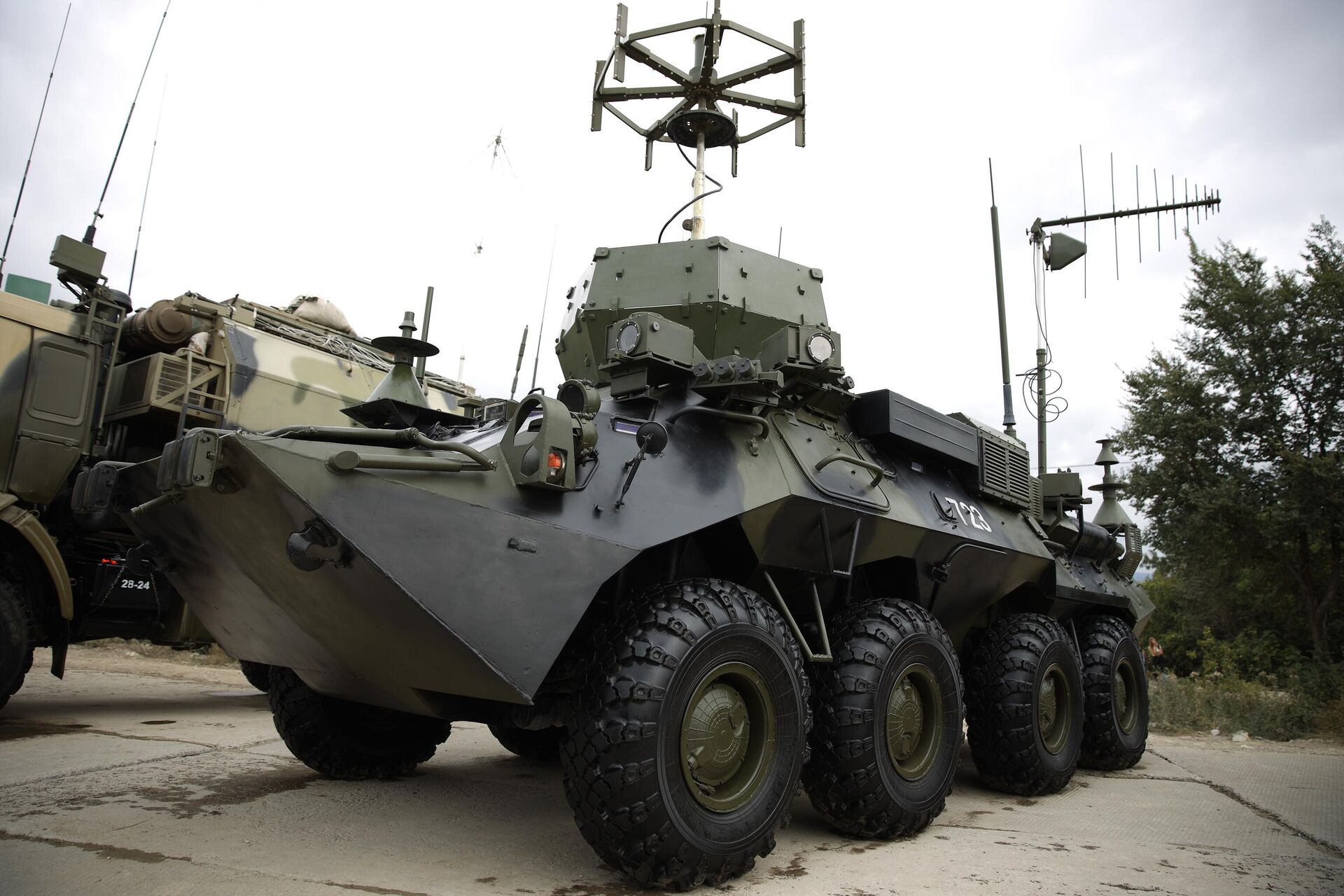
Russian Armored Personnel Carrier fitted with the Lesochek electronic warfare system. File photo.
© Sputnik / Vitaly Timkiv
/ Small Missile Sub Packing a Hefty Punch
Amur-950: A brand new non-nuclear submarine design with vertical missile launch capability envisioned by developers as a “floating missile battery capable of delivering a powerful preemptive salvo on enemy ships and coastal infrastructure.” Designed for low noise and high-awareness operation, the Amur-950 is expected to have a 1,000-ton displacement, a 19-man crew and a 30-day endurance time at sea, and be ideal as a reconnaissance and covert surveillance vessel.
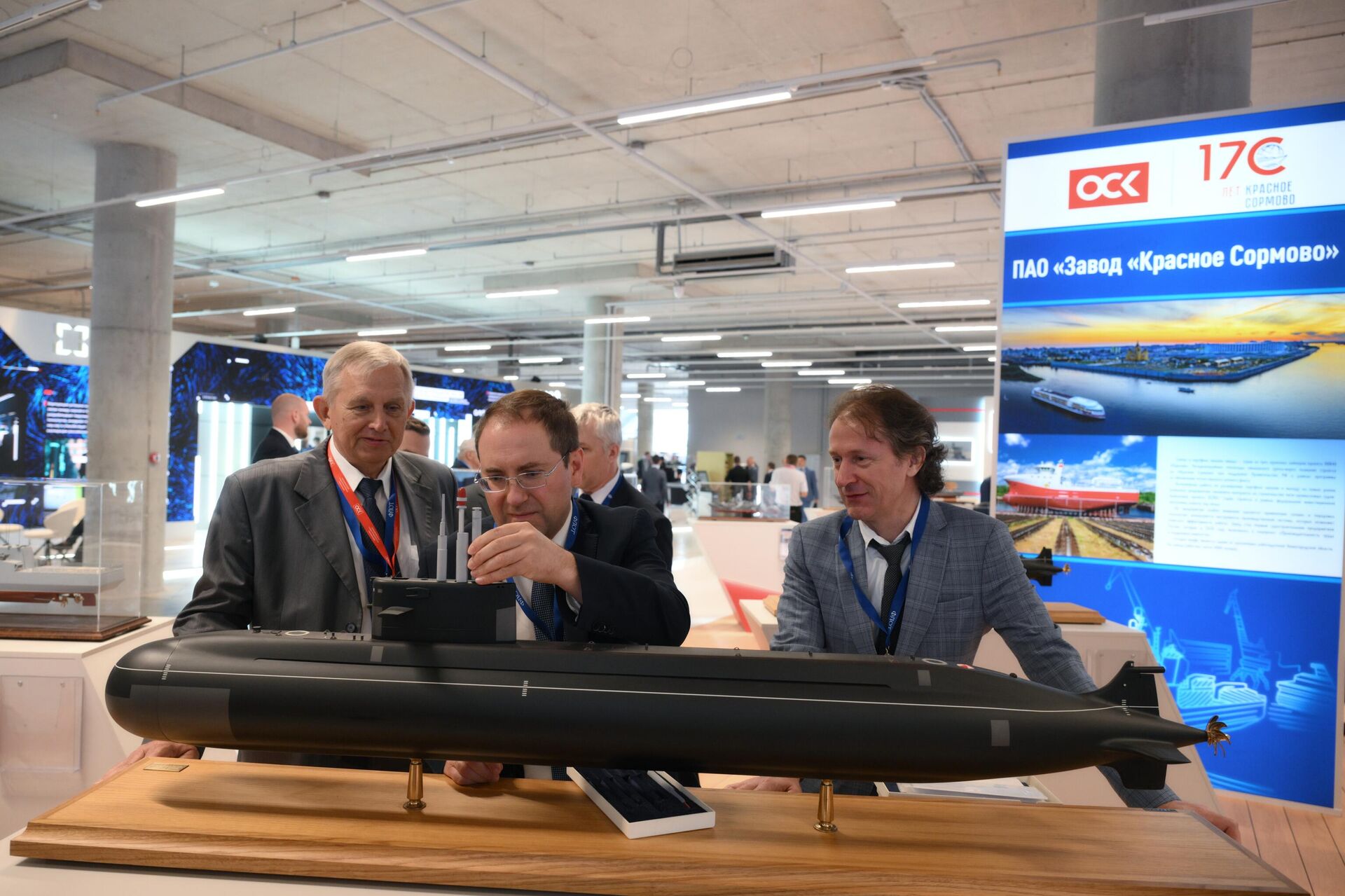
Scale model of Amur-950 mini-missile sub at a defense forum. File photo.
© Sputnik / Alexei Danichev
/ Personal Protective Equipment and People’s Defense Production
This year’s ARMY-2024 features equipment from the so-called ‘people’s defense industry’ – products developed and produced by independent designers and volunteers from among ordinary Russians seeking to aid the front. Among designs on display is the Repeynik portable radar station, which can detect drones of all classes and sizes, including FPV drones, and a unique low-cost night video surveillance system using off-the-shelf IP camera tech processed by custom-built software codenamed ‘Host’.
Bars-L: A new titanium armored helmet created by the Scientific Research Institute of Steel to withstand small arms fire. Also presented at the expo is the Obereg Br5-class ceramic armor plate bulletproof vest, now featuring expanded armor coverage and reduced weight (9 kg).
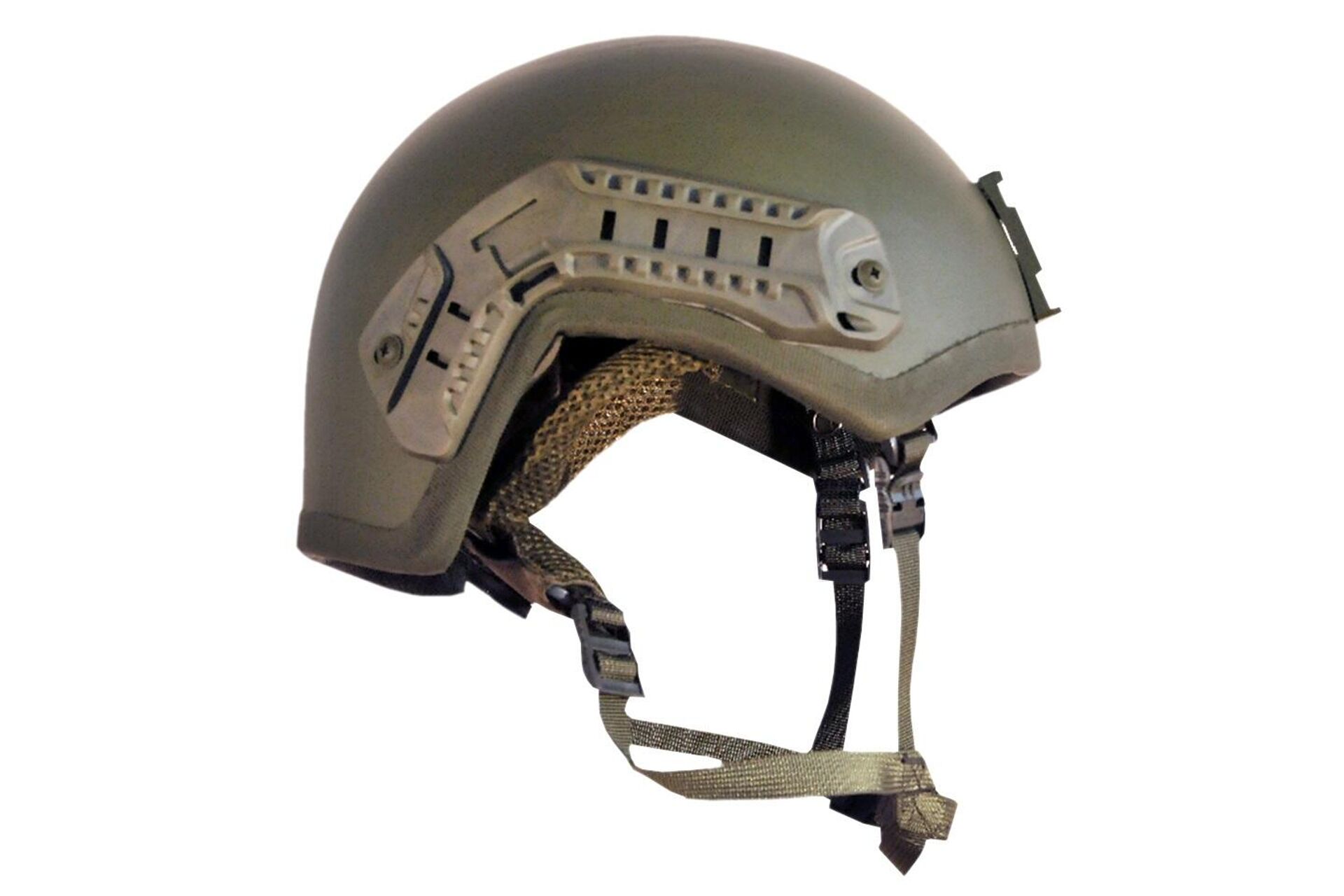
Bars-M armored helmet.
© Photo : Rostec State Corporation
Surikat: Lightweight electronic warfare system that can be worn by individual troopers. Designed to detect and jam mini-drones at distances of several tens of meters away.
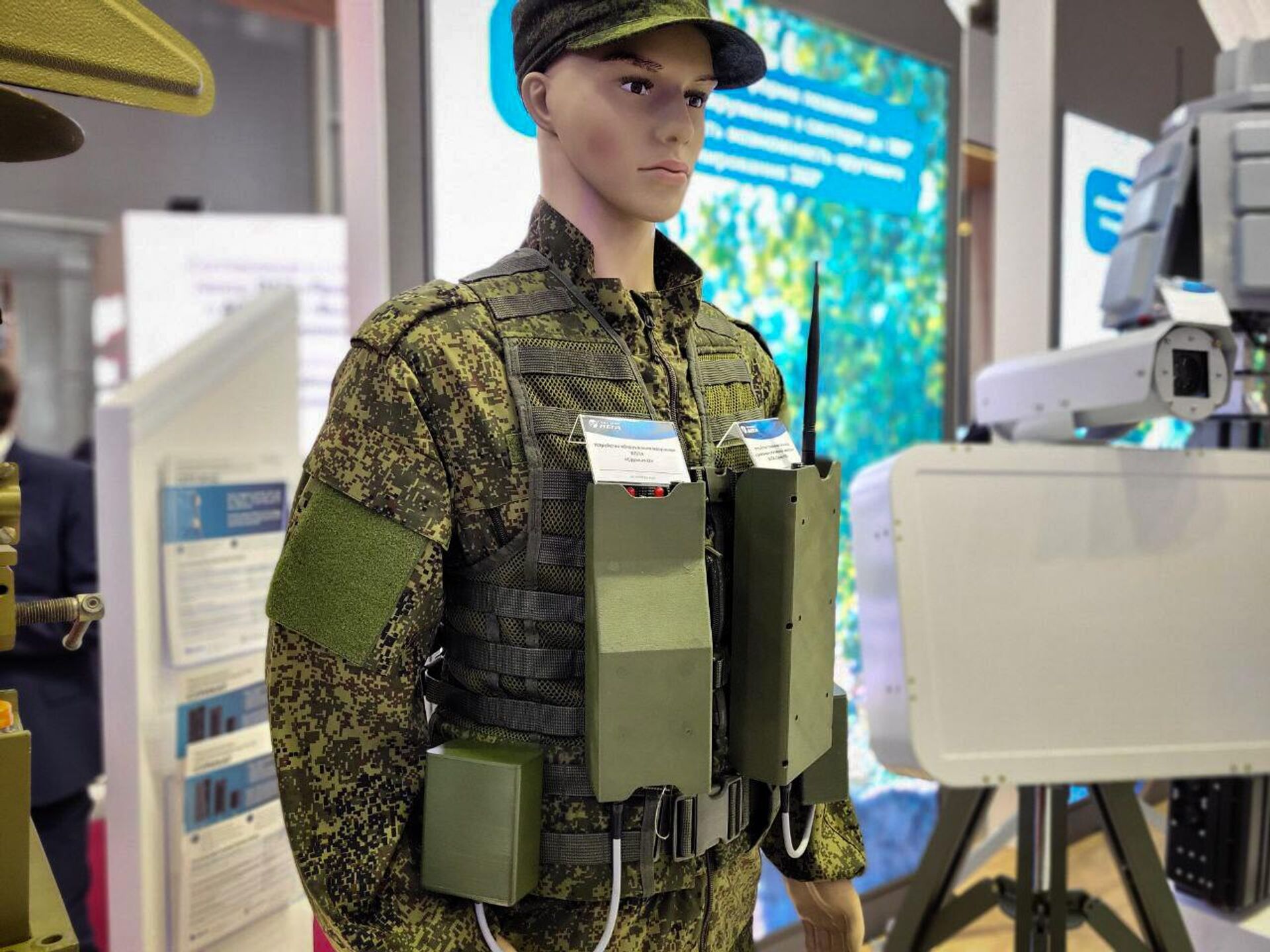
Surikat man-portable electronic warfare system for anti-drone defense.
© Photo : Rostec State Corporation

